Nepal is distinctly known as the world of colorful vibrant festivals celebrated in pretext of socio-cultural heritages. It is said that In Nepal every other building is a temple and every other day is a festival. Nepalese are said to observe more festivals than there are days in a year. There are different kinds of festivals celebrated to honor Hindu and Buddhist gods/ goddesses and others to recreate important events from ancient mythology and epic literature.
The rich cultural heritage of Nepal is best expressed in the many large and small festivals that occur throughout the year. Though the Nepalese have diverse beliefs and ethnic backgrounds, all unite in the celebration of the year’s major festivals. Festivals such as Dashain and Tihar are of national significance; such as Bisket Jatra or Red Machchhendranath Jatra, belong to the traditions of the old Valley towns and still others, such as Mani Rimdu, are observed only by a particular ethnic community.
Some of the traditional festivals observed in Kathmandu now are: Bada Dashain, Tihar , Maghe Sankranti : (January), Naga Panchami, Janai Poornima, Pancha Dan Teej/Rishi Panchani, Indrajatra, Ghanta Karna, Buddha Jayanti, Sri Panchami, Maha Shivaratri, Phagu Poornima , Ghodejatra, Chaite Dashain, Nava Varsha, Seto Machchhendranath and Matatirtha Aunsi, apart from those mentioned earlier. The festivities such as the Ghode (horse) jatra, Indra-Jatra, Loshar, Shivaratri and many more are observed by various communities of Kathmandu with great devotional fervor and enthusiasm.
Visit to Kathmandu, no matter which time of the year, promises a colorful and rewarding festive experience.
Shreepanchami/ Saraswoti Pooja
- Monday, February 05, 2024
- Vasant Panchami 2024
Shreepanchami, the festival devoted to Goddess Saraswati — the goddess of learning, is observed in January-February throughout Nepal. The festival is celebrated by worshiping the goddess at different temples across the country. The day is also known as Basant Panchami and the denotes the beginning of spring season. Parents start formal education of their children from this very day.
Lhosar 2024
- Jan 25, 2024 Sonam Losar
- December 31, 2024 Tamu Losar
- Gyalpo Lhosar
Lhosar is the New Year festival of different ethnic groups, including Tamang, Gurung and Sherpas, living in mountains and hilly areas of the country. However, Gurungs, Tamangs and Sherpas celebrate the festival on different dates. The festival falls during the month of January and February. They greet their friends, family members and relatives on the occasion of their New Year. They rejoice the festivals by singing, dancing and organising great feasts. They also pray for the well-being of their friends and family members on different monasteries. Monasteries and stupas, including the Bouddhanath and Swoyambhunath, wear festive look during the festival.
Maghe Shakranti
Maghe Shakranti is the festival devoted to lord Vishnu. It falls on the month of Magh when the sun enters the southern hemisphere and the day begins to grow longer and warmer. On this day people take an early morning in a holy river, visit temples of Vishnu. People read Bhagwat Gita, apply mustard oil over their bodies and enjoy the feast of rice cooked with lentils, yams, sweets made of sesame and jaggery.
Maha Shivaratri
- Tuesday, March 01
Maha Shivaratri 2024
Maha Shivaratri is the festival devoted to Lord Shiva. The festival usually falls on the month of February. People throng to the temples dedicated to Lord Shiva throughout the country. They fast for the whole day and worship Lord Shiva wishing for the well-being and prosperity of themselves and their family members. A great fair is organized at the Pashupatinath temple, lying on the bank of holy Bagmati River, on this day. Hundreds of thousands of devotees from around the country and different parts of India come to the temple premises to offer worship to Lord Shiva. Sages and Sadhus from India and Nepal add extra charm to this festival. Nepal Army also observe a special military parade as the Maha Shivaratri also coincides as the Army Day.
National Democracy Day 2024
National Democracy Day is celebrated on the 7th of Falgun, usually on the third week of February. People and the then ruler King Tribhuvan united to topple the autocratic regime on this very day in 2007 BS. It was the day when democracy was first institutionalized in the country. A government holiday is declared for this day and people celebrate the day by paying tribute to known and unknown martyrs. A special function is organised to mark the day in Army Pavilion, Tundikhel.
Fagu Purnima (Holi) 2024
Fagu Purnima or Holi is one of Nepals most colourful festival. It is the festival of colour and people smear different colours to their friends and family members to celebrate this day. The day signifies the demolition of demoness Holika by Lord Bishnu. The eighth-day festival formally begins with the erection of a ceremonial pole at the Kathmandu Durbar Square. People also through water-filled balloons to their friends and strangers as a part of celebrating this festival. The people in the Tarai cerebrate the festival the following day. The festival usually falls in the month of March.
Chaite Dashain 2024
Chaire Dashain is one of the two Dahsain celebrated by Hindus. The festival is celebrated by sacrificing animals by the army in the cortyard of Hanumandhoka. Western visitors are allowed to view from balcony overlooking the courtyard, with a splendid view of all the galore.
New Year 2081
Nepali people follow the Bikram Sambat calendar usually starts from the First of Baisakh (mid April). The first day of Baisakh, the first month of the calendar, is celebrated throughout the country as New Year day. People extend their warm greetings and wishes to their friends, well-wishers and family members on the occasion of this New Year day. Bisket Jatra is organised in Bhaktapur to celebrate the New Year day.
Ram Nawami 2024
Ram Nawami is celebrated by Hindu people throughout the country to celebrate the birth day of Lord Ram, the king of Ayodhya, according to the epic Ramayan. The festival, which usually falls on the month of April, is celebrated on temples dedicated to Lord Rama. A special festival is organised in Ram Janaki temple in Janakpur to mark this festival.
Bisket Jatra 2024
Bisket Jatra is celebrated in the ancient city Bhaktapur and its neighbouring areas. The festival is celebrated by replaying a drama passed on over centuries. God Bhairav and Goddess Bhadrakali are placed in a large chariot adn pulled through crowds of cheering onlookers, when the chariot reaches a sloping open square, tug-of-war takes place between the inhabitants of the upper and lower parts of the town. Winners are considered to be blessed with good fortune for the coming year. The festival concludes with several days of dancing and worships.
Matatirtha Puja (Mother’s Day) 2024
Mother’s day is a day of mother, when the sons and daughters show gratitude and appreciation to her for her unconditional love and support. Children offer delicacies and gifts to their mother on the day. People who do not have mother pay homage to Matatirtha located six miles south-west of central Kathmandu. People believe that paying homage at Matatirtha brings peace to the departed soul.
Rato Machhendra Nath Jatra 2081
The chariot procession of Rato Machhendranath is one of the most colourful festival celebrated in the country. Locals pull the chariot of Rato Macchendranath from Pulchowk though different thoroughfares of Patan to Jawlakhel, which the festival is climaxed by a special ritual called Bhoto Dekhaune Jatra. The officials of Guthi Sansthan display the antique Bhoto from the top of chariot in the presence of President, Prime Minister, Ministers and other dignitaries. The festival takes place on different days in the month of Baisakh (March-April).
Buddha Jayanti 2024
Buddha Jayanti, or the festival dedicated to Lord Buddha, is one of the most important festivals celerbated by Buddhist and Hindu followers alike. The festival, which falls on the full moon day of Baisakh (March-April), marks the birthday, the day of enlightenment and the day of death of Lord Buddha. Lumbini, the birthplace of Lord Buddha, wears a festive look during this festivals. Thousands of devotees parade in the streets propagating the message of peace. The festival is celebrated throughout the country.
Ubhouli 2024
Ubhouli festival is celebrated by Kirat, Rai and Limbu during the season of farming in the month of April/May. It is celebrated to worship the land and the nature with a Seuli (small branch fill of leaves). The literal definition of Ubhouli is the migration of animals and birds towards higher and cooler northern region. Festival shows the inter-relation between human and nature.
Nag Panchami 2024
Nag Panchamis is celebrated by worshipping snake god or Naga. It is believed that int he ancient times Nagas halted rain from pouring over Nepal. So, the king at that time used his tantric power to make nagas to let go off rain. The king succeeded to make nagas happy and rain started pouring in Nepal. From the very day, it was celebrated as Nag Panchami every year. On the day, people stick a picture of Nag high above their doorway and perform puja and offer foods to the snakes putting in the yards and fields.
Janai Purnima & Rakshya Bandhan 2081
Janapurnima is a festival celebrated on a full moon day. On the day hindus chant the powerful Gayatri Mantra and change their Janai or sacred threat, while a rakshya bandhan, a red or yellow protection thread is tied around the wrist of Hindhus. Pilgrims visit to a sacred lake Gosainkunda and pray Lord Shiva by bathing in the lake.
Gaijatra 2081
Gaijatra is one of the most colorful festivals in Nepal. The festival usually falls in the month of August and is celebrated in memory of the departed souls. The festival is organised mostly by the people of Newar community. People carry out a procession of funny characters in memory of their kith and kin. In recent days, the day has also developed as a occasion to crack jokes and satires on different distortions in the society. Interesting political satires are the major features of such programmes. The festival literally means Cow’s festival.
Krishnastami 2081
Krishnastami is the festival dedicated to Lord Krishna. The days is believed to be the birthday of Lord Krishna, the eighth incarnation of Lord Buddha. Devotees fast for a whole day and worship Lord Krishna wishing for the progress and prosperity of their relatives and family members. People throng the temples dedicated to Lord Krishna throughout the country. The Krishna Temple in Patan attracts hundreds of thousands of devotees on this very day.
Gokarna Aunsi (Father’s Day) 2081
Gokarna Aunsi is the most auspicious day to honour ones father for his guidance and teachings in life. It is a day when sons and daughters near or far offer with gifts and sweets and spend the day with him. People who do not have father go to Gokarna Temple situated in the north-east of Kathmandu. People perform rictuals and offer grains, vegetables and fruits to the priests performing the rictuals.
Teej Festival 2081
Teej Brata is one of the most important festivals for Hindu women. Hindu women fast for the whole day wishing for the longevity of their husband. They throng to different temples of Lord Shiva and wish for the longevity and prosperity of their husbands and family members. They enjoy the festival by singing and dancing. They wear red dress and adorn themselves with attractive jewelries.
Gaura Parba 2081
Gaura Parba is celebrated in the Far-western region of Nepal honoring Lord Krishna’s Birthday. The Deuda dance is a major part of the festivities in which participants hold hands and form a circle as they step to traditional music.
Indrajatra 2081
Indrajatra is the festival dedicated to Lord Indra, the rain deity. The festival, which usually falls in the month of August-September, is observed with great fanfare in Kathmandu Valley. The festival begins with the erection of a ceremonial pole at the Kathmandu Durbar Square. The chariot procession of living Goddess Kumari, Ganesh and Bhairav is organised to mark this day. The festival culminates with the worship of Goddess Kumari, Ganesh and Bhairabh by the President of Nepal. Lakhe dance, the famous masked dance in the country, is another major attraction of the festival.
Bada Dashain / Vijaya Dashami 2080
Date in AD : 24 October 2024
Date in BS : 29 Asoj 2080
Specious Time: 10:18 AM (Nepal Time)
Bada Dashain, usually falls in the month of September-October, is the greatest Hindu festival of Nepal. The festival continues for 15 days. It is also called Durga Pooja as the festival is celebrated to commemorate the slaying of demon Mahisasur by goddess Durga. The first day of the festival is called Ghatasthapana when a sacred jar with holy water is installed in each Nepalese house and barley seeds are sowed in the sand. The seventh day is called Fulpati, when a bunch of ginger stalks, banana leaf, sugarcane and seasonal flowers is introduced in the Dashain Ghar. The eighth day of the festival is called Mahaastami and it is the day of great sacrifice. The 10th day of the festival, Vijaya Dashami, is the major day of the festival when people take Tika and Jamara from their elders and relatives. The festival ends on the day of Kojagrat Poornima.
Deepawali / Bhai Tika / Tihar 2080
Date in AD : 06 November 2023
Date in BS : 20 Kartik 2080
Specious Time:
Deepawali, or the festival of lights, is the second biggest Hindu festival of Nepal. The festival is celebrated for five days and crow, dog, cow and oxen are celebrated on separate days. The Laxmi Pooja, which falls on the third day of the festival, is the major attraction of the festival. People illuminate their houses and surroundings with colourful lights and Bhailo singers wish for the prosperity of people. Laxmi, the goddess of wealth, is worshipped on this day. The festival climaxes on the fifth day when sisters worship their brothers and wish for their progress and prosperity.
Nepal Sambat / Nepa Sambat 2080
According to the legends, a citizen of Kathmandu named Sankhadhar Sakhwa paid off the debts of all the people in Nepal. To commemorate this event, a new era was established known as Nepal Sambat. Newar community from all over the country mark the new year or Nepal Sambat with different festivities and cultural programs. The Nepal Sambat follows the lunar calendar and it consists of 354 days per year and an added one month every third year.
Mani Rimdu 2024
Mani Rimdu is the most important festival in Tengboche. The festival is comprised of nine days of various ceremonies and meditation (Drupchen). It is concluded by a special blessing ceremony given by Tengboche Rinpoche to the public and the world renowned Mask dances are performed by the monks at the Tengboche Monastery.
Chhath Parva 2024
10 November 2024
Chhath Parva is the festival celebrated mainly in Janakpur as well as in the rest of the country by the Maithili speaking people. This festival is marked for four days worshipping the rising and setting sun. Men and women prepare special dishes made up of rice and molasses and taste them after an audience to the moon. They take a dip in Ganga Sagar, the famous lake of the area. People believe that, by worshipping the sun would help cure the diseases like leprosy and bring longivity and prosperity to their family member.
Bala Chaturdasi 2081
Bala Chaturdasi is the festival celebrated to appease the souls of the dead for any wrong things committed against them while they were still alive. The rites of this Chaturdasi are in honor of Bala, a cremation site laborer who accidentally ate a piece of burnt flesh and became a demon addicted to cannibalism. The festival begins at the dusk of the evening prior with devotees assembling in the vicinity of Pashupatinath for all night vigil. Bathing and ceremonies begins at the dawn followed by a long 2-3 hours procession through a rough course over which the participants scatter grains. This continues until a horn sounds the termination in the evening.
Bibah Panchami 2081
Bibah panchami is the festival celebrated in the rememberance of the wedding of Ram and Sita. Each year on this day, idols of Ram and Sita are brought out in procession and their wedding ceremony is re-eacted during a week-long religious fair. Bibah Panchami reflects the devotion of Hindus to Ram, perhaps the most popular among the incarnations of Vishnum and to Sita the model of the ideal Hindu women.
Udhouli Parba 2081
Udhouli Parba is the festival celebrated by Kirat, Rai and Limbu community during the harvesting season which falls in the month of november/december, mainly to exibith the gratefulness to the nature and to receive the approval to harvest from the land. The literal definition of Udhouli is the migration of animals and birds from higher down to warmer southern low lands. This migration towards south gave the festival its name Udhouli literally meaning downward movement.
Tamu Lhosar 2081
Abiding by the Lunar calendar, Tamang, Magar, Gurung and toher Himalayan communities old Nepal celebrate Tamu Lhosar as their New Year during the month of December. Monasteries are attractively adorned with colorful decorative items. People take blessings from monks for their progress, prosperity and happiness. Parties are organized at homes and invitations are forwarded to relatives and friends. Delicious foods, music and dances are the major attractions of the party. Greetings and gifts are exchanged.

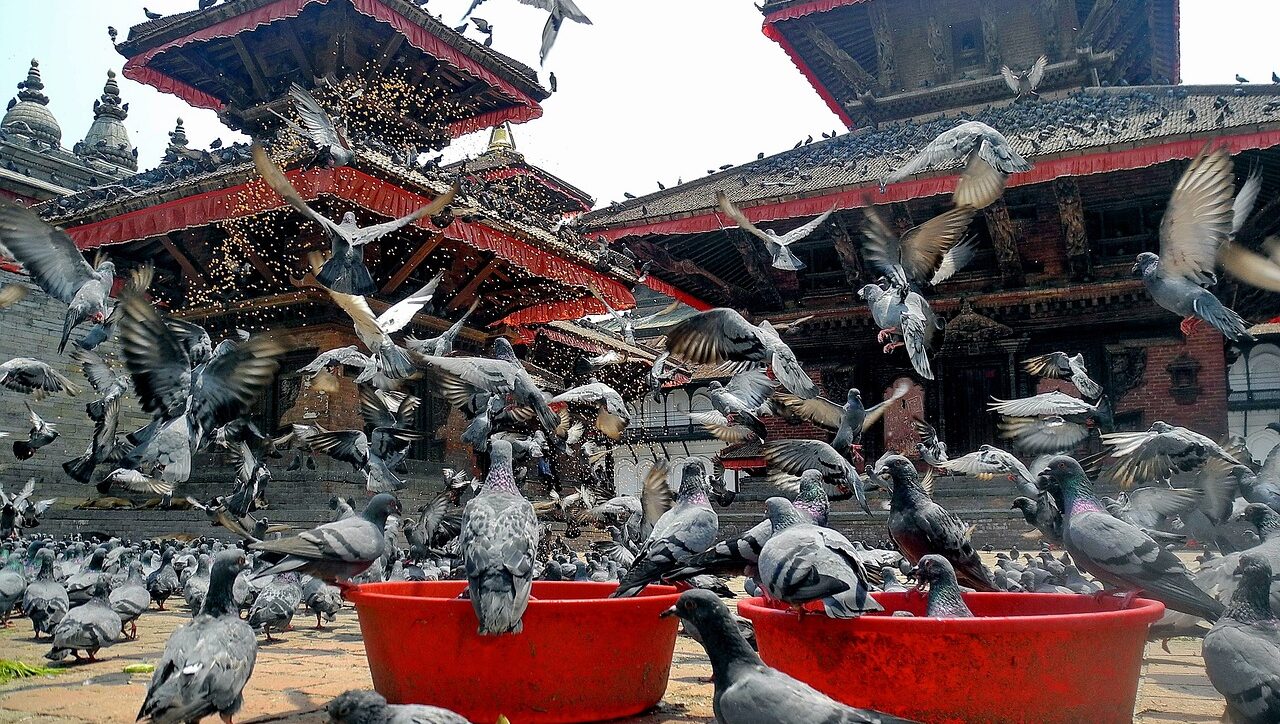
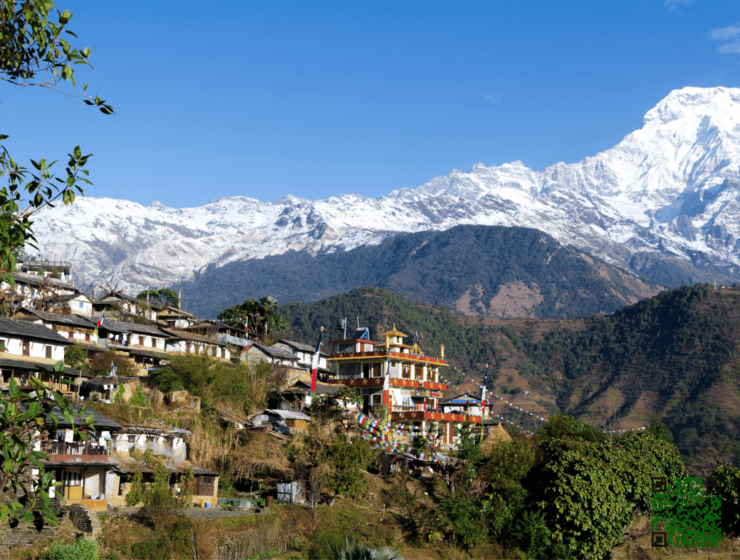
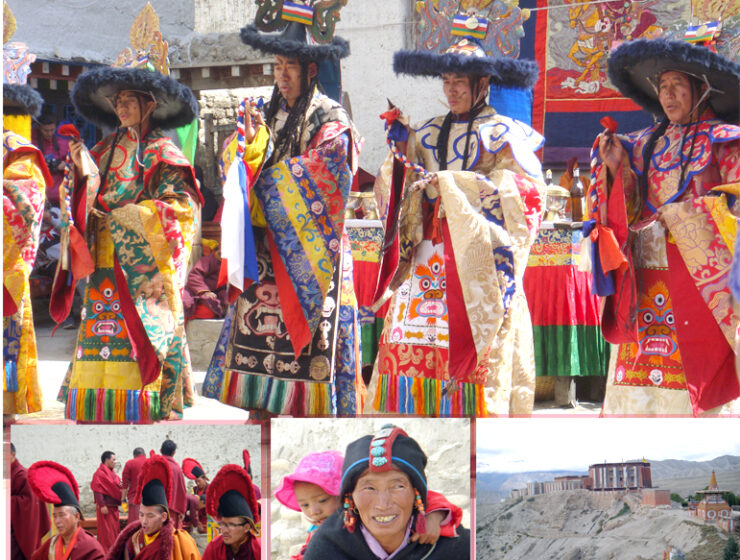
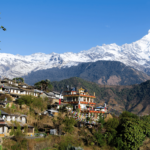
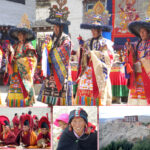

1 Comment
Nepal